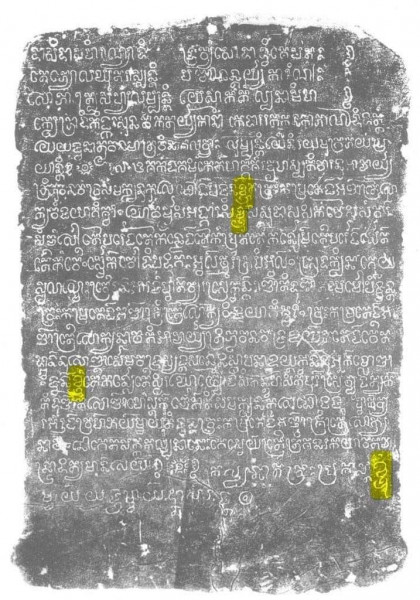PostedDate: 03/01/2567
PostedBy: レモン スイカ
💥หลักฐานที่เรียกชาวกัมพูชาว่า "
#เขมร "เก่าที่สุด คือ ศิลาจารึก Ka. 64 ซึ่งเป็นศิลาจารึกสมัยก่อนเมืองพระนครวัด อายุราวพุทธศตวรรษที่ 12 กล่าวถึงทาสชาวเขมรโบราณไว้ว่า “(๑๓) กฺญุม เกฺมร โฆ โต ๒๐. ๒๐. ๗ เทร สิ ๒” 🇰🇭
คำว่า กฺญุม ในภาษาขอมโบราณสมัยก่อนพระนครหมายถึง ข้ารับใช้ ส่วนคำว่า เกฺมร (kmer) เมื่อรวมความหมายของคำว่า “กฺญุม เกฺมร” แล้ว จึงน่าจะแปลว่า “ข้ารับใช้ (ที่เป็น) ชาวเขมร” แสดงว่าชาวกัมพูชาเรียกตัวเองว่า เกฺมร (kmer) มาตั้งแต่พุทธศตวรรษที่ 12 ก่อนที่จะพัฒนามาเป็นคำว่า เขฺมร (khmer) ในช่วงเขมรสมัยเมืองพระนคร และกลายเป็น แขฺมร ออกเสียงว่า แคฺมร์ (khmaer) ดังที่ปรากฏในภาษาเขมรปัจจุบัน
💥The earliest evidence calling Cambodians "Khmer" is the Ka. 64 inscription, which is an ancient inscription before Angkor. Age around the 12th Buddhist century, referring to the ancient Khmer slaves, "(13) Kjum Kemara Gho To 20. 20. 7 Tre Si 2" The word Kjum in the ancient Khom language before the Angkor period means me. Servant As for the word Kem (kmer), when combining the meaning of the word "Kjum Kemra", then it should be translated as "Servant (who is) the Khmer", indicating that the Cambodians call themselves Ke. Mon (kmer) since the 12th century
Synopsis: These 47 lines in Khmer record the names of some 431 slaves. The slavelists are distinguished by contrasting Khmer slaves (351 names) with those from Maleṅ (157 names). Face A registers 214 slaves (137 Khmer, 77 Maleṅ); face B registers 217 slaves (137 Khmer in four teams, 80 Maleṅ). On face A neither donor nor recipient is named, but additional gifts of cattle, palms, and riceland are mentioned; on face B the donors are identified as mratāñ kamratāṅ craṅ gos, while the slaves are given to an unnamed vihāra.‼️


